What is natural language processing?
Natural language processing refers to the ability of a system to analyse and respond to spoken or written language in a way that is meaningful. It allows systems to understand context, detect sentiment, extract key phrases, and even carry on conversations with users. NLP is commonly used in areas like search engines, chatbots, virtual assistants, and customer service applications.
Natural language processing for contact centres
In modern contact centres, NLP plays a crucial role in improving response time, reducing manual tasks, and increasing customer satisfaction. It helps identify customer intent, route queries efficiently, and even automate replies in real time. When combined with tools such as an AI-enabled contact centre, NLP enhances service quality without compromising accuracy.
How NLP works in customer service
In customer service, NLP works by using machine learning models trained on large volumes of human language. These models identify patterns in speech and text, helping systems understand what customers mean, not just what they say. Techniques like tokenisation, part-of-speech tagging, and sentiment analysis help break down messages and detect intent, emotion, and urgency. An omni-channel environment becomes even more effective when NLP is used to create a seamless flow of conversation regardless of the platform.
These capabilities are further strengthened when integrated with tools like CRM systems, which give agents real-time access to customer history, helping them respond more effectively.
9 ways to use NLP in customer service to boost efficiency
As natural language processing continues to evolve, businesses are finding practical applications that transform how they engage with customers. From voice assistants to real-time translation, these tools offer measurable improvements in efficiency and satisfaction.
- Automating responses to frequently asked questions helps reduce handling time by using natural language processing techniques to provide instant answers based on previously collected data and document classification.
- Analysing customer sentiment for better routing involves sentiment analysis and entity recognition to detect emotional tone, which helps route complex queries to trained human agents more efficiently.
- Detecting intent in messages to suggest next steps applies machine learning models and cognitive linguistics to recognise user intent and offer relevant solutions without the need for manual triage.
- Assisting agents with recommended replies uses deep learning and AI-based tools to generate contextual suggestions based on the structure of sentences and historical interactions.
- Enhancing voice assistants and IVR systems incorporates speech recognition software and natural language generation to manage spoken interactions and reduce dependency on manual input.
- Translating messages in real time for multilingual support supports language detection and automatic translation to enable consistent service delivery across natural languages and regional contexts.
- Summarising long conversations or tickets uses statistical methods such as inverse document frequency and automatic summarisation to extract relevant insights and improve knowledge transfer.
- Flagging urgent or escalated issues leverages pretrained models and relationship extraction to detect critical terms or phrases and bring high-priority interactions to the attention of supervisors.
- Improving agent training through conversation analysis applies syntax parsing, speech tagging, and dependency parsing to assess conversation quality and highlight opportunities for coaching based on user intent and common root forms.
Features such as workforce optimisation make it easier to apply these NLP-driven insights across team scheduling and performance tracking.
Benefits of NLP in customer service
NLP contributes to higher customer satisfaction and more consistent service quality. It reduces human error, lowers operational costs, and frees up human agents to focus on complex issues. Moreover, when NLP is used in AI-powered agent support, agents receive suggestions in real time, improving both speed and accuracy.
Customers also benefit from personalised support that feels more conversational and less robotic. NLP identifies context, tone, and intent, which helps systems avoid generic responses.
Importance of NLP for modern businesses
With customer expectations evolving rapidly, businesses must adopt technologies that keep pace with demand. NLP enables faster issue resolution and better alignment with customer expectations.
Organisations across sectors such as retail, government and healthcare, and higher education use NLP to handle high volumes of enquiries without affecting quality.
Challenges of implementing NLP in customer service
Although NLP is promising, implementation presents challenges. These include training models on industry-specific language, maintaining data privacy, and ensuring the accuracy of intent detection. Misinterpretation of queries can lead to frustration and impact service quality.
- It is hard to train NLP models with industry-specific language because standard models do not understand the special terms used in every sector.
- Protecting private data is very important when using NLP tools that process sensitive information like customer chats, medical records, or financial statements.
- Understanding what a customer means is not always easy, especially when people speak in unclear or mixed language during real-time conversations.
- When NLP systems misunderstand a question, they give the wrong answer, which can leave customers feeling confused or frustrated.
- Some sectors, like housing and business process outsourcers (BPOs), need custom models that understand their usual way of speaking and writing.
- Off-the-shelf NLP tools may not work well unless they are adjusted to suit the specific needs of a business or industry.
Accessibility matters. NLP tools must be easy to use for everyone, including people who rely on voice commands or other assistive technologies.
Future prospects of NLP in customer service
The future of NLP is rooted in greater contextual understanding, multilingual fluency, and ethical data use. Future models will likely incorporate emotional intelligence, enabling systems to adjust responses based on how users feel.
As technology advances, sectors like not-for-profit will benefit from low-cost NLP tools that expand reach without increasing resource demands. Integration with tools such as Microsoft Teams will also support hybrid work and distributed teams.
For example, transactions and secure payments will continue to integrate with NLP to handle sensitive data with minimal human involvement, while still maintaining user trust.
Final thoughts
NLP is no longer an emerging tool; it is essential for delivering efficient, intelligent customer service. It enhances real-time responses, understands user intent, and supports scalable service across languages. With growing advances in deep learning, document summarisation, and semantic relationships, NLP continues to push the boundaries of automated assistance, making it indispensable in today’s language technology landscape.
To learn more about smart, AI-driven customer support tools and explore what’s possible, request a demo today.
Your Contact Centre, Your Way
This is about you. Your customers, your team, and the service you want to deliver. If you’re ready to take your contact centre from good to extraordinary, get in touch today.


